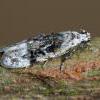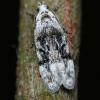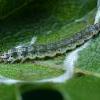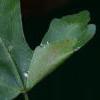35.155 Altenia scriptella (Hübner, 1796)
Status and Distribution
Very local and restricted to southern half of England, from Somerset to East Anglia and in Herefordshire and Worcestershire. It is rarely noted on more than a few occasions each year.
Formerly recorded (not since at least 1930) in Shropshire, Yorkshire and Cornwall.
Two records from Cumbria (in 1902 and 2009) require confirmation and one from Perthshire is considered a misidentification of Carpatolechia alburnella.
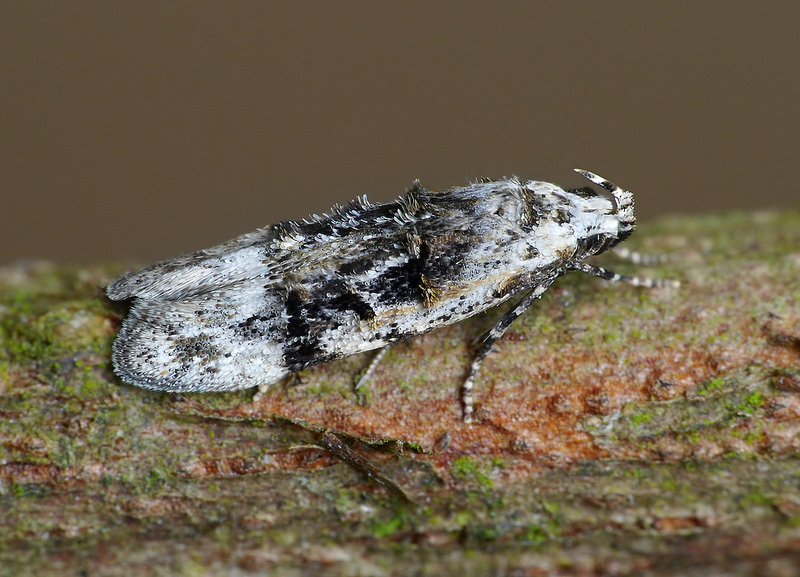
Provisional map
Habitat
Associated with hedgerows in open country and edges of woodland.
Finding the Moth
Larva: folds a leaf flatly, upperside inmost, by means of bands of silk spun upon silk. Feeds on the upper epidermis and upper parts of the parenchyma without making any conspicuous blotches and readily changes to a new leaf. Shows a preference for the lower branches of saplings growing in hedgerows or at the margin of woods.
Adult: rests on tree trunks and fences during the day and later comes to light.
Similar Species
The usual form with the forewings showing an obvious whitish apical quarter and variable ammounts of blackish brown across the inner three-quarters are unlikely to be confused with any other species except possibly some darker marked forms of Carpatolechia alburnella. In that species segment two of the labial palps is white, whereas the whole of the palps in A. scriptella are ringed greyish white and dark. In more grey coloured specimens, the presence of a series of raised scales in the centre of the forewing and a distinctive yellowish sub-costal streak (parallel to and just below the leading edge) are characteristic.
Single brooded during June and July, occasionally into early August.
Earliest: 22nd May 2015 (VC12)
Latest: 17th August 1998 (VC13)

